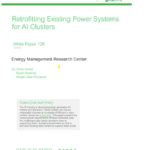Table of Contents
- Understanding the Hybrid Workforce Security Challenge
- What Is Adaptive Defense in Endpoint Security?
- Why Traditional Endpoint Security Falls Short
- The Evolution Toward AI-Driven Endpoint Protection
- Endpoint Security in the Hybrid Work Era
- Key Benefits of Adaptive Endpoint Defense
- Challenges in Implementing Adaptive Endpoint Security
- The Future of Endpoint Security: What’s Next?
- Building a Future-Ready Endpoint Security Strategy
- Conclusion
The global shift toward hybrid work has permanently changed how organizations think about cybersecurity. With employees connecting from multiple devices, networks, and geographies, the traditional security perimeter has dissolved. The result? A growing attack surface that challenges even the most advanced security teams.
In this new reality, endpoint security has become the first and last line of defense. Yet, static and rule-based systems can no longer keep up with evolving threats. The future of endpoint security lies in adaptive defense—a dynamic, AI-driven approach that continuously learns, predicts, and responds to risks across hybrid environments.
This article explores how adaptive defense is transforming endpoint protection and what strategies enterprises can adopt to secure their distributed workforce.
Understanding the Hybrid Workforce Security Challenge
The hybrid work model offers flexibility and productivity benefits, but it also multiplies the number of potential vulnerabilities. Employees use personal devices, connect through public networks, and access sensitive data outside traditional office firewalls.
Each endpoint—laptops, tablets, smartphones, IoT devices—becomes a potential entry point for attackers. Cybercriminals are exploiting these weak spots using phishing, ransomware, and advanced persistent threats (APTs).
A Ponemon Institute study found that nearly 68% of organizations experienced one or more endpoint attacks that compromised data or IT infrastructure in the past year. This rising frequency signals a clear truth: endpoint protection must evolve from static defense to intelligent adaptability.
What Is Adaptive Defense in Endpoint Security?
Adaptive defense is a next-generation approach to endpoint security that leverages AI, behavioral analytics, and real-time monitoring to identify and respond to emerging threats autonomously.
Unlike traditional antivirus solutions that rely on known signatures, adaptive systems analyze contextual data, user behavior, and system patterns to predict and neutralize attacks before they cause damage.
At its core, adaptive defense operates on three principles:
- Continuous Learning:
Machine learning models evolve with each interaction, learning from new attack vectors and improving detection accuracy. - Context-Aware Protection:
The system understands the user’s environment—device type, location, time of access—and adjusts defense protocols dynamically. - Automated Response:
Instead of waiting for human intervention, adaptive systems can isolate infected endpoints, revoke privileges, and remediate issues in real time.
This approach ensures protection that grows smarter, not older, with time.

Why Traditional Endpoint Security Falls Short
Conventional endpoint security solutions depend heavily on static rules and signature-based detection. While effective against known threats, they struggle to keep pace with modern cyberattacks that mutate constantly.
Some key limitations include:
- Delayed Detection: Threat signatures must first be identified, analyzed, and added to the database before protection can occur.
- Manual Response: Human-dependent monitoring slows down response time, allowing breaches to spread.
- Limited Scalability: Static systems fail to adapt to new devices, cloud workloads, and remote endpoints seamlessly.
- Siloed Protection: Traditional security often focuses only on individual devices rather than network-wide threat correlation.
As hybrid work expands, these limitations leave critical gaps in visibility and control—gaps that attackers exploit.
The Evolution Toward AI-Driven Endpoint Protection
The move toward AI-driven endpoint protection marks a major leap in cybersecurity innovation. Modern solutions combine multiple technologies to create an ecosystem of defense that adapts in real time.
1. Machine Learning for Threat Detection
Machine learning models continuously analyze patterns of normal behavior and flag anomalies. These systems can identify previously unseen malware variants, reducing dependency on signature updates.
2. Behavioral Analytics
Behavioral data from endpoints—such as login frequency, file access patterns, or system changes—helps detect deviations that may indicate insider threats or compromised credentials.
3. Zero Trust Integration
Adaptive endpoint security aligns naturally with the Zero Trust framework, where no device or user is trusted by default. Every access request is verified dynamically, even within internal networks.
4. Cloud-Native Security
With hybrid work reliant on SaaS tools and cloud collaboration, cloud-native endpoint protection ensures security policies are applied consistently, regardless of location or device.
5. Automated Threat Response
AI-driven automation reduces mean time to detect (MTTD) and mean time to respond (MTTR) by enabling systems to take autonomous action—quarantining devices, revoking tokens, or resetting credentials without delay.
This convergence of AI, automation, and Zero Trust principles forms the backbone of modern adaptive defense.
Endpoint Security in the Hybrid Work Era
For hybrid workforces, endpoints are scattered across offices, homes, and co-working spaces—connected by varying levels of security. This fragmentation makes centralized visibility and control more challenging.
Adaptive endpoint security offers a unified framework where every device is continuously monitored and risk-scored based on real-time data.
Core Capabilities for Hybrid Security:
- Unified Endpoint Management (UEM):
Consolidates management of corporate and BYOD devices under one console. - Identity and Access Management (IAM):
Integrates with endpoint controls to verify users and enforce least-privilege access. - Network Behavior Analysis:
Detects suspicious data transfers, lateral movement, or unapproved connections. - Secure Access Service Edge (SASE):
Extends secure connectivity to remote endpoints by combining networking and security in a cloud-delivered model. - Endpoint Detection and Response (EDR):
Provides continuous monitoring, threat hunting, and forensic insights into endpoint behavior.
When orchestrated together, these tools form an adaptive security fabric—a living ecosystem that strengthens over time.
Key Benefits of Adaptive Endpoint Defense
1. Real-Time Protection
Adaptive systems detect and neutralize threats in seconds, often before human analysts can intervene.
2. Reduced Operational Overhead
Automation minimizes manual monitoring and reduces the workload on security teams.
3. Enhanced Visibility
Comprehensive dashboards provide a 360-degree view of endpoint activity across devices, networks, and cloud environments.
4. Predictive Defense
Machine learning enables proactive identification of potential breaches before they occur.
5. Scalability and Flexibility
Adaptive defense evolves with your workforce—whether it’s 100 employees or 10,000—without compromising performance.
The result is a resilient cybersecurity posture capable of supporting digital transformation securely.
Challenges in Implementing Adaptive Endpoint Security
While adaptive defense offers numerous benefits, implementation requires careful planning.
Data Overload
AI systems rely on massive datasets for accurate predictions. Poor-quality or incomplete data can lead to false positives or missed threats.
Integration Complexity
Blending new AI-driven tools with legacy systems demands strong IT alignment and change management.
Cost Considerations
Initial deployment and model training can be expensive, though the ROI over time often outweighs upfront costs.
User Privacy
Monitoring endpoints must comply with privacy laws like GDPR. Transparent data handling and anonymization are essential.
Addressing these challenges ensures smoother adoption and maximizes the long-term value of adaptive defense systems.

The Future of Endpoint Security: What’s Next?
The future of endpoint security lies in deeper intelligence, autonomy, and collaboration across digital ecosystems. Here’s what the next wave of innovation looks like:
- Self-Healing Endpoints:
Devices capable of detecting, isolating, and remediating themselves without manual input. - AI-Driven Threat Prediction:
Predictive analytics will forecast vulnerabilities and preemptively apply patches. - Extended Detection and Response (XDR):
Integrating endpoint, network, and cloud data into a unified threat detection layer. - Adaptive Encryption:
Encryption that automatically adjusts based on the risk level and user context. - Secure Edge Intelligence:
With 5G and edge computing expanding, endpoint security will move closer to the user, ensuring lower latency and stronger privacy.
These advancements will redefine how organizations safeguard data, ensuring resilience against even the most advanced cyber threats.
Building a Future-Ready Endpoint Security Strategy
To future-proof your hybrid workforce, enterprises should adopt a layered approach:
- Invest in AI and Behavioral Analytics: Ensure your endpoint solutions leverage real-time data for decision-making.
- Embrace Zero Trust Architecture: Verify every user, device, and connection continuously.
- Enable Automation: Reduce human error and speed up response times with automated remediation.
- Centralize Management: Unify policies and visibility across all devices and networks.
- Educate Employees: Human awareness remains a key defense against phishing and social engineering.
The combination of advanced technology and informed employees forms the foundation of adaptive resilience.
The hybrid work revolution has made endpoint security more critical—and complex—than ever. Static defenses no longer suffice in a world where every device and connection can become an attack vector.
Conclusion
Adaptive defense represents the evolution of endpoint protection: intelligent, responsive, and resilient. By integrating AI, automation, and Zero Trust principles, organizations can stay ahead of threats while empowering their hybrid teams to work securely and efficiently.
In 2025 and beyond, the future of endpoint security won’t be defined by walls, but by adaptability—the ability to evolve as fast as the threats themselves.








Leave a Reply